

Josh Nevett
CarExpert's top five large SUV reviews of 2025
23 Hours Ago
It's no longer the newest kid on the block, so has the Isuzu MU-X's appeal diminished with the arrival of a new-generation arch-rival?
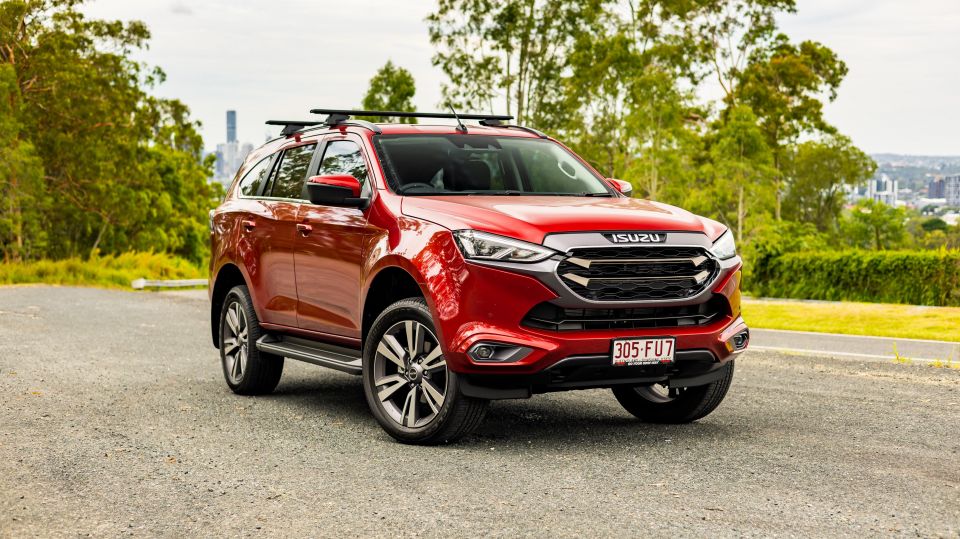
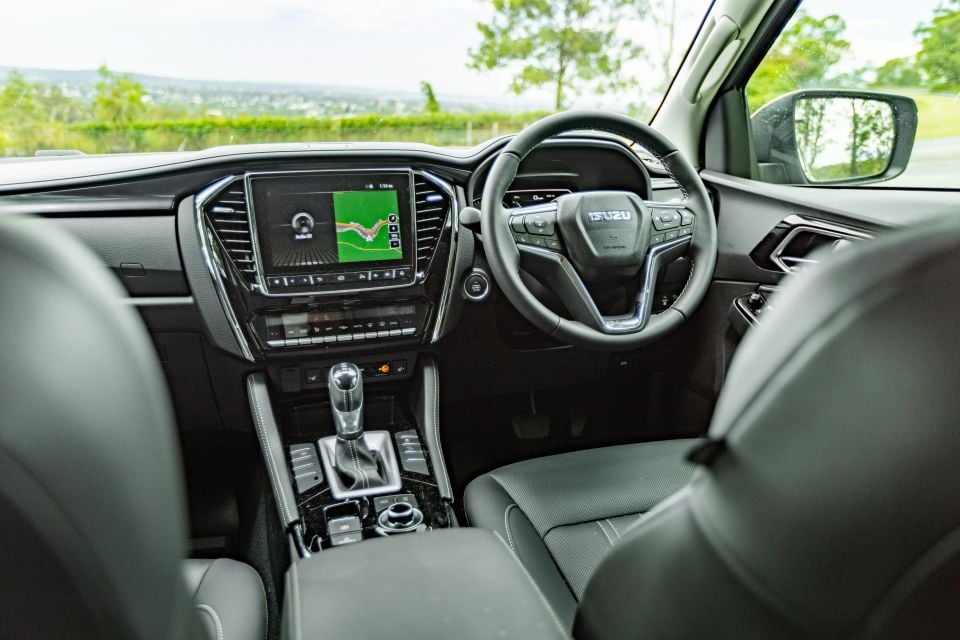

Quickly see how this car stacks up against its competition. Select any benchmark to see more details.
Where expert car reviews meet expert car buying – CarExpert gives you trusted advice, personalised service and real savings on your next new car.
The Toyota LandCruiser Prado is comfortably ensconced as Australia’s favourite large, body-on-frame SUV, but there’s a lot of jockeying for the number two spot.
Last year, the Isuzu MU-X and Ford Everest were neck-and-neck in sales. The MU-X entered its second generation in Australia in 2021, but a new generation of Everest followed in 2022 meaning the Isuzu is no longer the newest kid on the block.
The only recently redesigned MU-X, which was such a huge leap in technology over its predecessor, now finds itself with an even more modern rival. One can’t forget the Prado, either, which got a shot in the arm with a more powerful turbo-diesel engine in 2020 – thousands of Australians each year drive off with one, despite its advanced age.
For 2023, Isuzu has given the MU-X some running changes. There’s nothing especially noteworthy here; other than a new hands-free power tailgate on the LS-U and LS-T, as well as an auto-off function for the blind-spot monitoring and rear cross-traffic alert systems when a trailer is hitched up and detected via the genuine trailer plug accessory.
Otherwise it’s the usual fare: new wheel designs, a new paint colour, and some trim changes so minor you’d be hard-pressed to notice them.

They don’t do much to improve the MU-X’s rather awkward looks. Whereas the old MU-X was clearly ute-based, it was neat and inoffensive in appearance. This time around, Isuzu’s designers tried to give the MU-X a seemingly more crossover-inspired body design.
Alas, its front and rear track look too narrow, giving the appearance of the body spilling over the sides. Its styling is puffy, like it’s having an allergic reaction, and the front has a distinct overbite to it. Isuzu is lucky there aren’t many beauty queens in this segment – need we remind you of the Mitsubishi Pajero Sport and Toyota Fortuner? – but the chunky, purposeful Everest is vastly more aesthetically pleasing.
While the changes for 2023 are subtle, what hasn’t changed is noteworthy. Pricing is the same as it was in 2022, surprising given the ubiquitous price increases we’ve seen across the industry of late.
Isuzu offers a fairly wide range of MU-X variants, with our tester sitting at the very top.
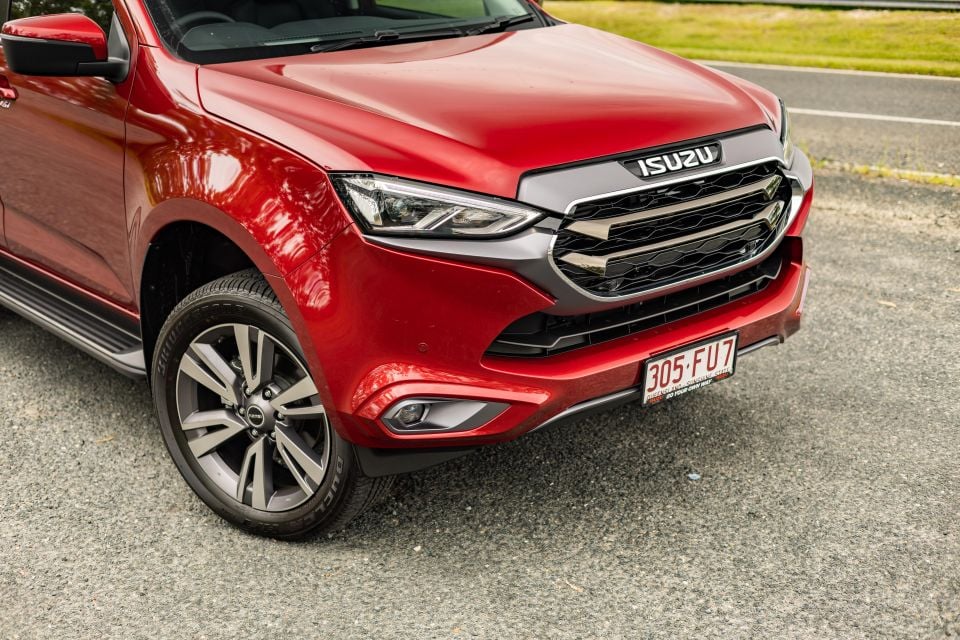
There’s one engine, one transmission, and three trim levels (LS-M, LS-U and LS-T), each with a choice of rear- or four-wheel drive.
The range opens at $48,900 before on-road costs and tops out with our LS-T 4×4 tester at $67,400 before on-roads, though Isuzu is currently offering it at $65,990 drive-away. The 4×2 version is $61,400 before on-road costs but has no nationwide drive-away deal.
Premium paint, including our tester’s Magnetic Red Mica, is an extra $650. Our tester also had $591.58 roof cross-bars fitted.
The top-spec MU-X goes for mid-range Everest money, with the closest variant from the Blue Oval being the four-cylinder Trend at $65,590 before on-road costs. The turbo-diesel V6-powered Sport is a tantalising $4000 more, however…
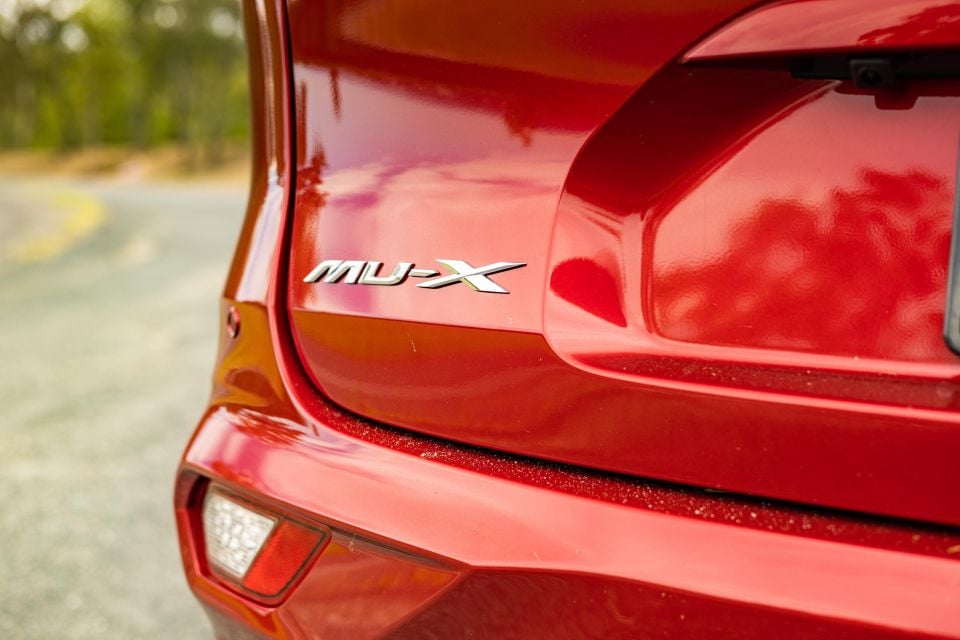
The LandCruiser Prado can be had in GXL guise for $67,530 before on-road costs, while more affordable rivals include:
Buy your new car without the stress. It's fast, simple and completely free.

Great service from Travis and team, second time I have used this business would not hesitate to recommend them to anyone
Craig C.
Purchased a Ford Ranger in Sunshine Coast, QLD
CarExpert helped Craig save thousands on his Ford Ranger, now let us save you on your next new car.
Find a dealOne look at the MU-X’s interior and its kinship to the D-Max ute is all too clear. Look a little closer, however, and you can see the pleasing touches Isuzu has made to distinguish its SUV.
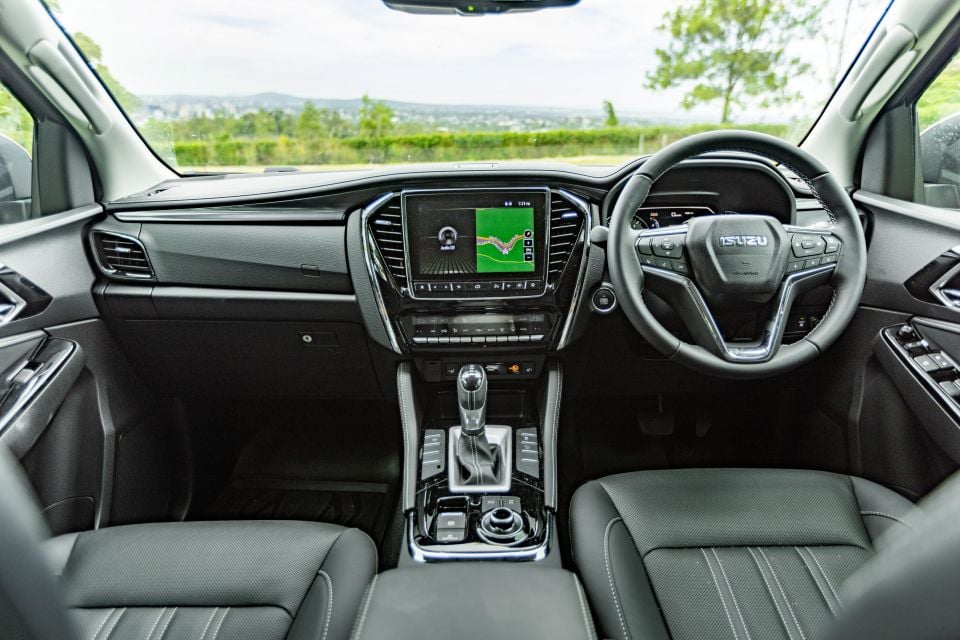
You still get the neat touches that make the D-Max interior appealing, including dual glove compartments and pop-out cupholders on either side of the dashboard.
There’s a padded dash top with stitching elements, giving the appearance of leather wrapping; this feature can also be found on the highest-spec D-Max models.
The sides of the centre console are finished in leatherette, giving your knees a soft place against which to rest. And while the headliner isn’t the thick, woven, it’s not the mouse-fur rubbish you’ll find in some ute-based SUVs.
The LS-T has some ambient lighting in the doors, which is simple but adds some class to the cabin. LED map lights would have been a nice, complementary inclusion but sadly they’re not present, with the yellowish dome light clashing aesthetically.
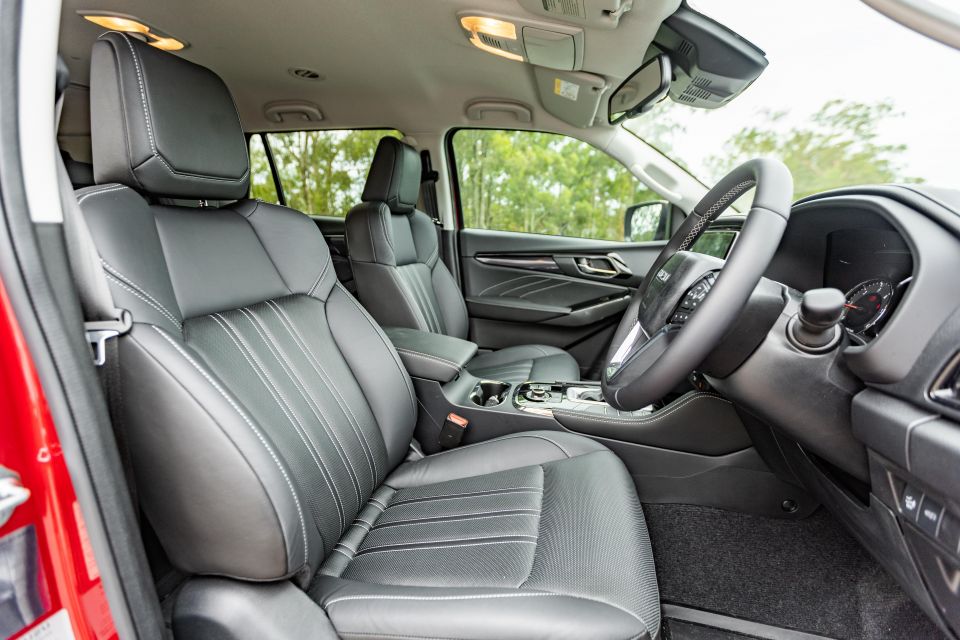
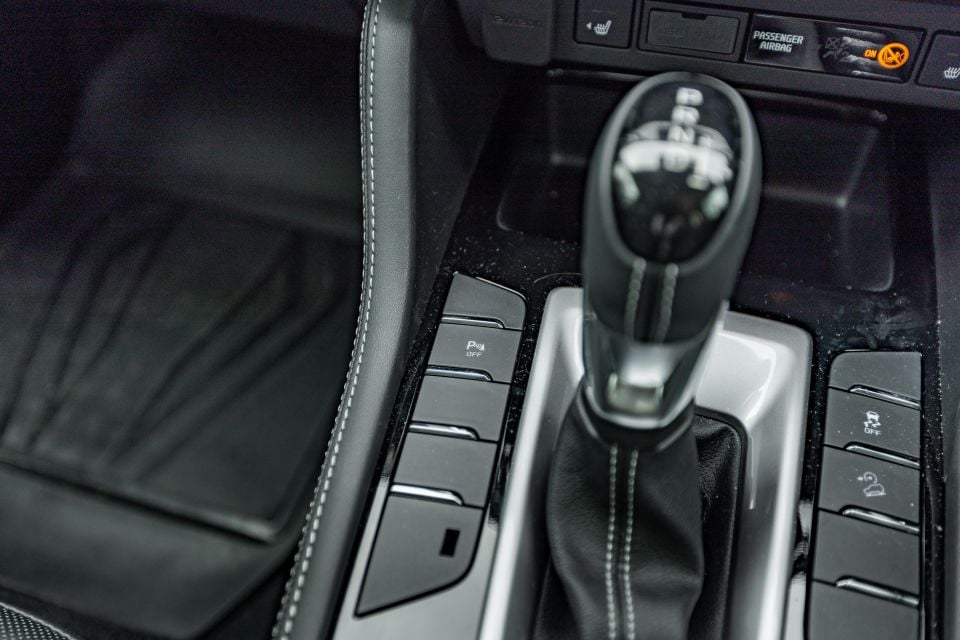
Another downmarket touch are the multiple button blanks flanking the gear shifter. Considering the LS-T is the range-topping MU-X, this is disappointing.
The basic design of the interior looks fairly modern, though, and everything feels sturdily assembled, with no creaks or ill-fitting trim. The doors feel quite light and require a firm pull to close shut, though this might not fall in the con column for you.
In terms of material quality and tactility, the MU-X outshines the Everest and is somewhere in the ballpark of the Prado.
Nevertheless, its interior doesn’t feel dramatically newer and fresher than the vintage Prado, and it’s down in the tech stakes against the Everest.
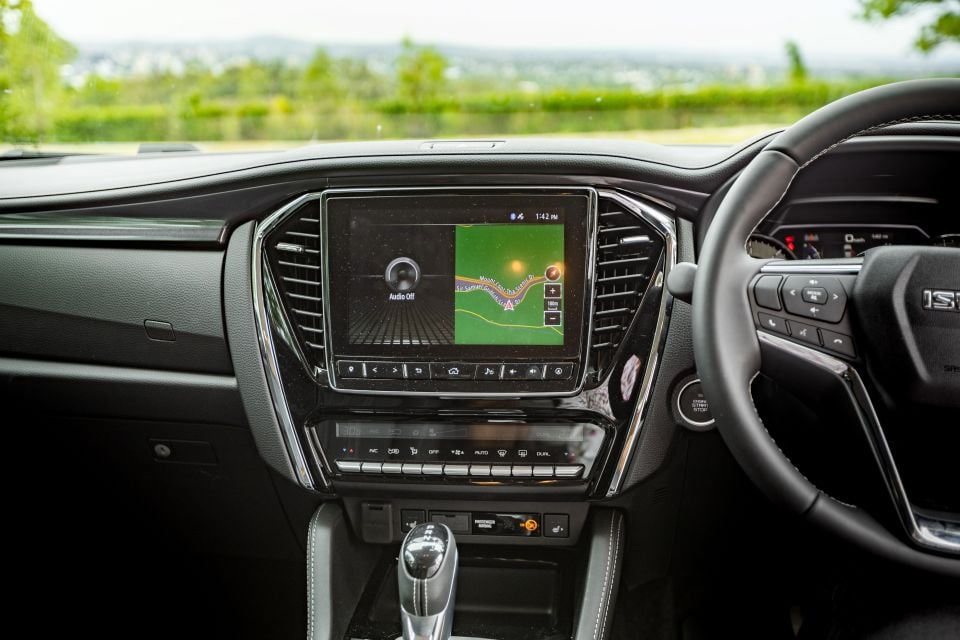
The 9.0-inch touchscreen infotainment system isn’t too laggy, and it does boast wireless Apple CarPlay and wired Android Auto, plus hard shortcut buttons underneath. But the interface (including the navigation) already looks dated and the home screen buttons are fiddly.
Ahead of the driver, analogue instruments flank a 4.2-inch information screen. But it’s a bit too small and cluttered in appearance, and while you can customise what appears on the screen to some degree, the distance to empty disappears as soon as the fuel light comes on – arguably right when you need it the most.
In terms of storage, there’s an adequate centre console bin plus the aforementioned handy second glove compartment. The bottle holders can also comfortably fit 1L bottles.
The sound system is so-so but the air-conditioning is top-notch, blasting ice cold air.
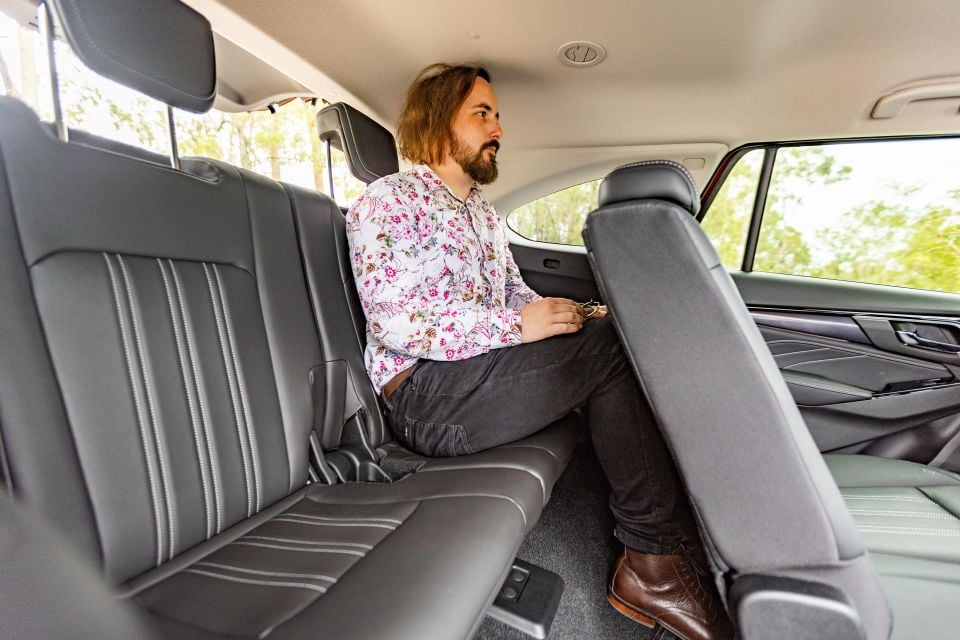
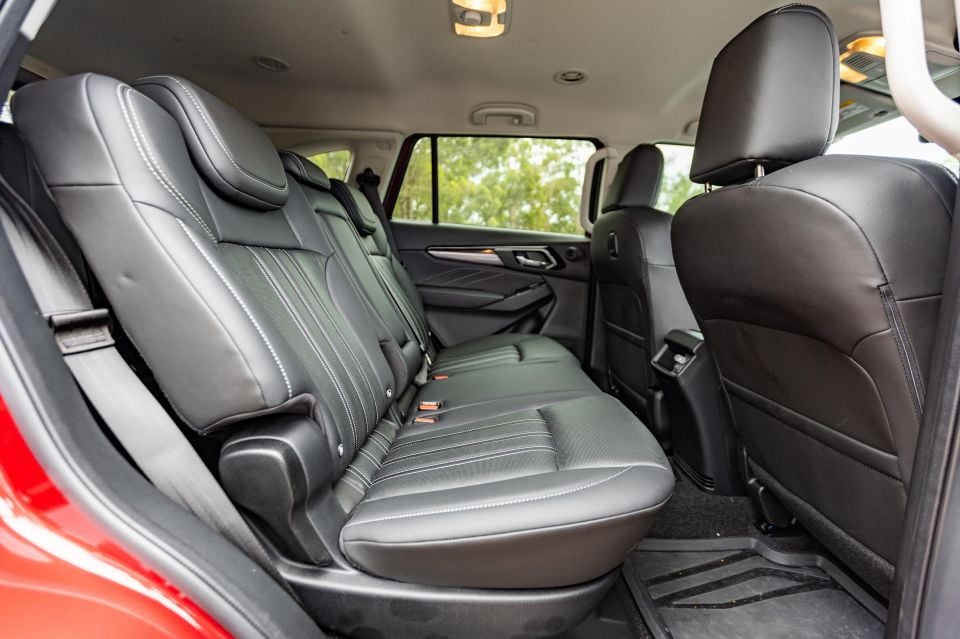
The MU-X beeps when you walk away from it, signifying the vehicle is locking – this makes sense. But why must it beep when you simply close the driver’s door?
The spacious second-row has two USB-A outlets and a small but open storage cavity at the base of the centre console, plus map pockets on the seatbacks and air vents in the roof. Access to the third row is easy: simply pull a lever, and the second-row seat tumbles forward.
The second row doesn’t slide, so there’s no way occupants in said row can free up more room for those in the far back. But, fortunately, there’s a decent amount of room back here.
I’m 180cm tall and I had a decent amount of both knee room and toe room. With the backrest in all but the most upright position, I also had a satisfactory amount of headroom.
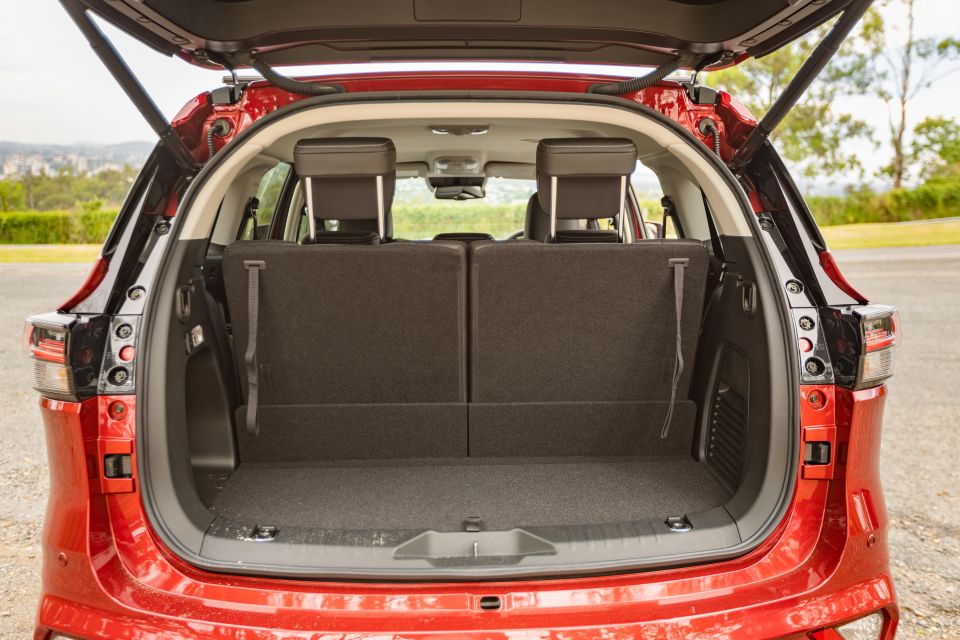
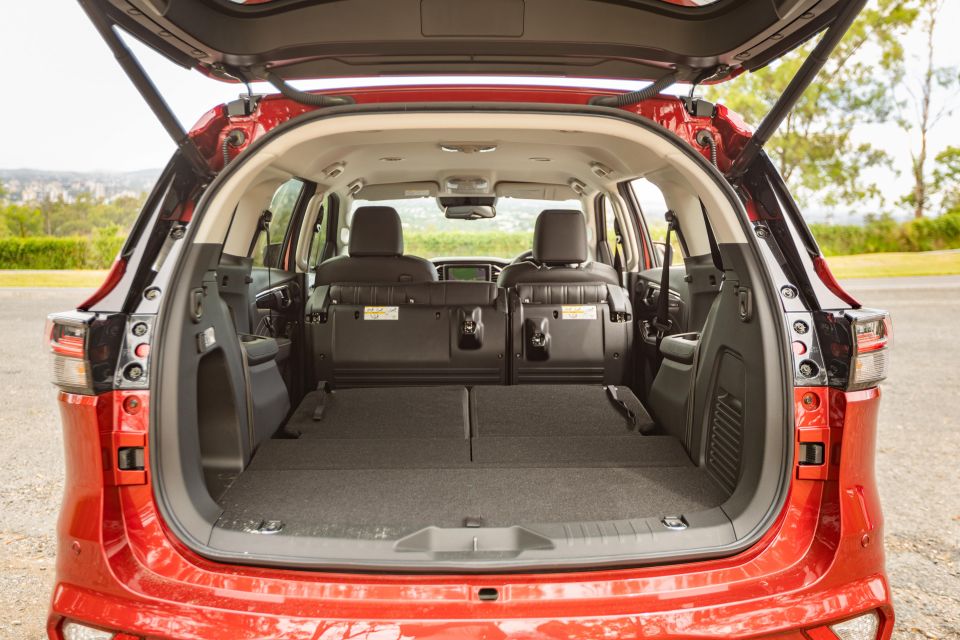
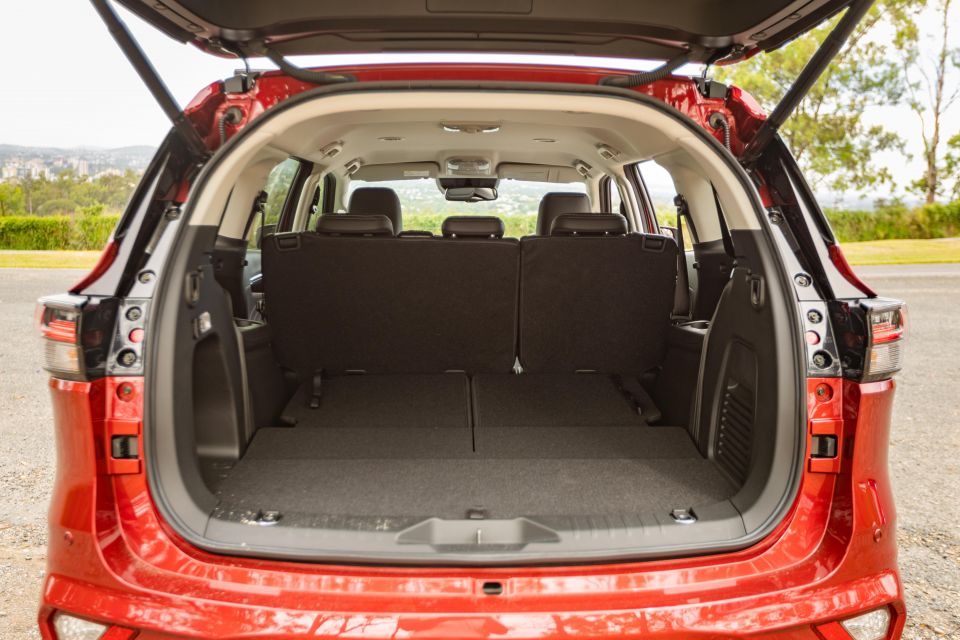
Someone taller than me might struggle back here, particularly as the roof drops down in these far reaches of the cabin, but most adults will be comfortable back here on all but long road trips.
There are air vents and cupholders back here, albeit no USB outlets.
Open the tailgate – now with a hands-free feature for 2023 – and you’ll find 311L of luggage space with all three rows upright. Drop the third row and this expands to 1119L, and increases further to 2138L with the second row folded as well.
The MU-X is powered by the same 3.0-litre four-cylinder turbo-diesel engine as the related D-Max and Mazda BT-50 utes, making 140kW of power and 450Nm of torque.
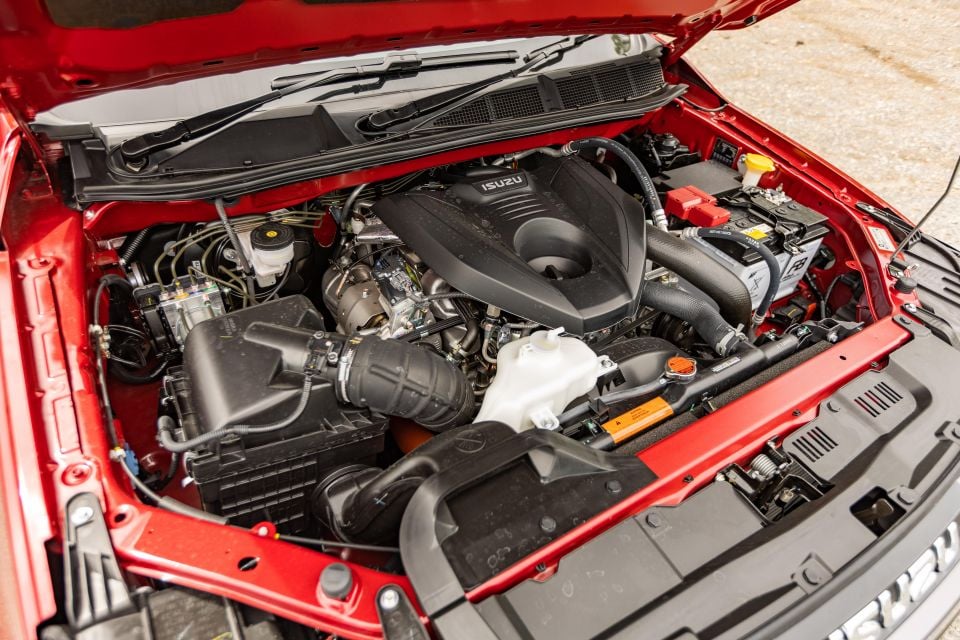
It’s mated with a six-speed automatic transmission and four-wheel drive, with selectable high- and low-range plus a locking rear differential.
Approach, departure and ramp-over angles are 29.2, 26.4 and 23.1 degrees, respectively, while wading depth is 800mm.
The MU-X also boasts unbraked towing capacity of 750kg and braked towing capacity of 3500kg, lineball with the Everest and better than the 3000kg braked figure of the Prado.
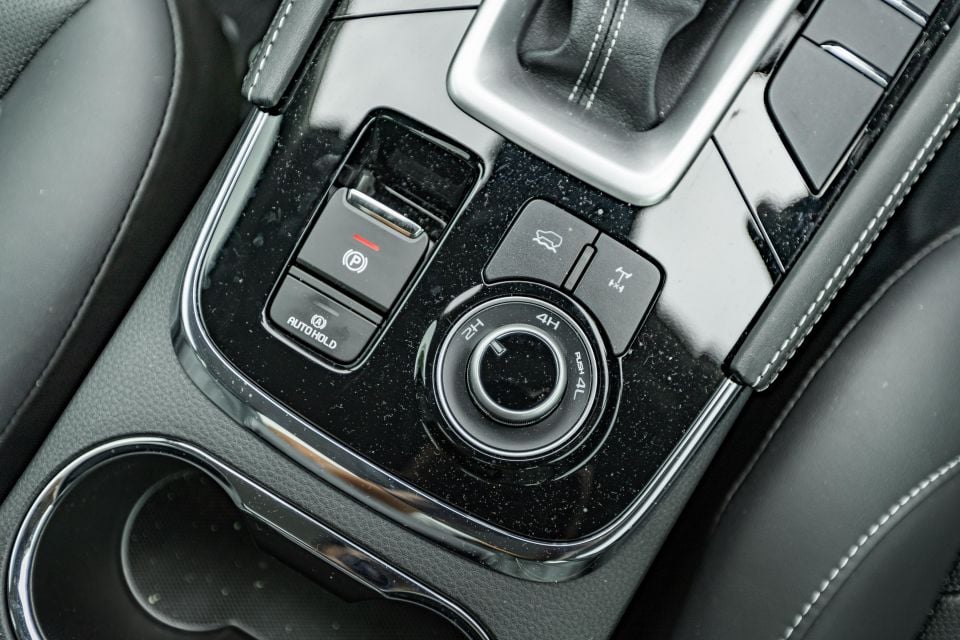
Over a loop comprising a mix of inner-city, suburban and highway driving, we averaged 9.9L/100km. Over the course of a week the MU-X hovered around 11L in predominantly urban driving, but with some more highway mileage in it eventually came down to 9.4L/100km.
The official combined cycle claim is 8.3L/100km, with an urban claim of 10.3L/100km.
Isuzu’s 3.0-litre turbo-diesel punches above its weight in the D-Max, feeling gutsier than its outputs would suggest. It meets its match in the MU-X, though.
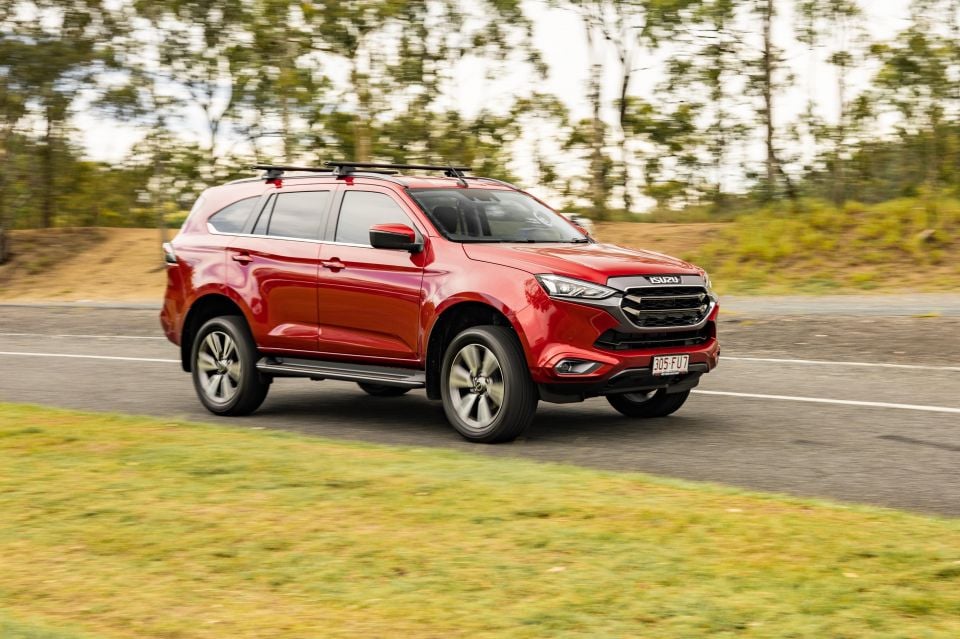
Performance in the MU-X is adequate, and that’s without a full complement of passengers on board. We wouldn’t call the MU-X slow, but a four-cylinder Everest has more oomph, let alone the V6.
That extra weight over the D-Max, coupled with multi-link coil rear suspension instead of leafs, pays dividends in ride comfort though.
The MU-X furnishes a comfortable ride over most surfaces. Bumps are absorbed quickly and adeptly, and don’t radiate throughout the vehicle, and it’s only when you drive over a series of ruts and imperfections in quick succession where you’ll really feel any impacts – and even then, it’s virtually never enough to really upset the MU-X.
Frame shake is virtually nonexistent.

Shifts from the six-speed automatic are generally smooth and unobtrusive, though there are no selectable drive modes.
The MU-X’s steering isn’t quite as fluid as an Everest’s, but it’s not as baulky as a Pajero Sport and feels a little more direct than a Prado’s. It has a comfortable weighting, being neither heavy nor overly light.
Unlike many of its rivals, the four-wheel drive system lacks a full-time mode designed for driving on pavement. There are 4H and 4L modes, but these are intended for off-road use only.
That means if you want the security of four-wheel drive traction on, for example, a rainy day in the suburbs, you’re out of luck.
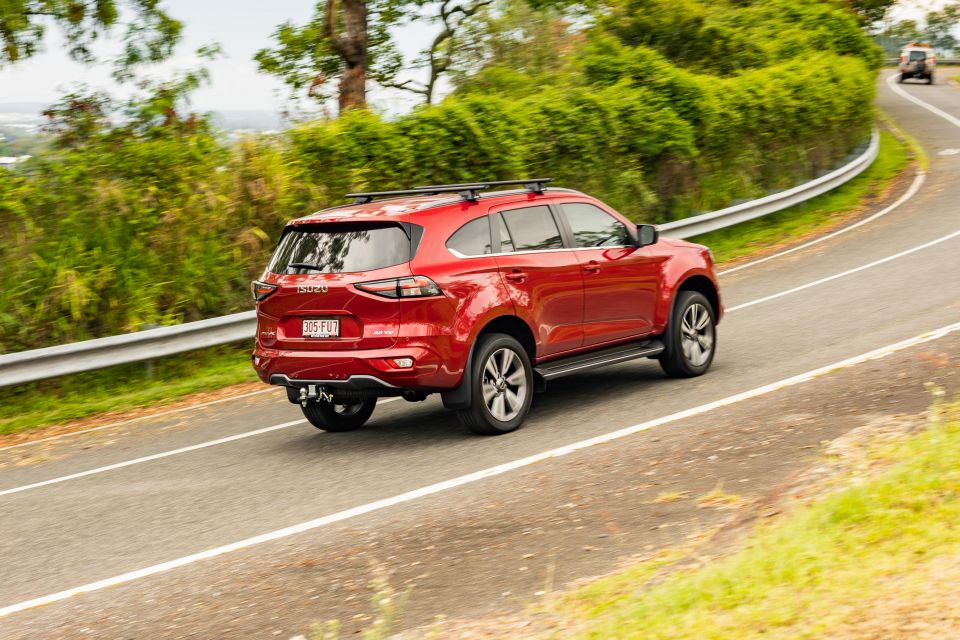
Where expert car reviews meet expert car buying – CarExpert gives you trusted advice, personalised service and real savings on your next new car.
The turbo-diesel engine produces the usual clatter you’d expect, plus the occasional uncouth sound reminiscent of a heavy truck. Fortunately, noise levels overall are quite low and there’s no unseemly vibration.
Even at highway speeds, and despite the presence of roof racks on our tester, wind noise is kept at bay. That’s fortunate, as the sound system is average at best.
The lane-keep assist system is quite assertive, though its centring function needs some finessing.
The adaptive cruise control is well-calibrated and can bring the vehicle quickly down to the set speed even on steeper descents, if sometimes with a bit of noise. Overall, the MU-X is a comfortable highway cruiser.
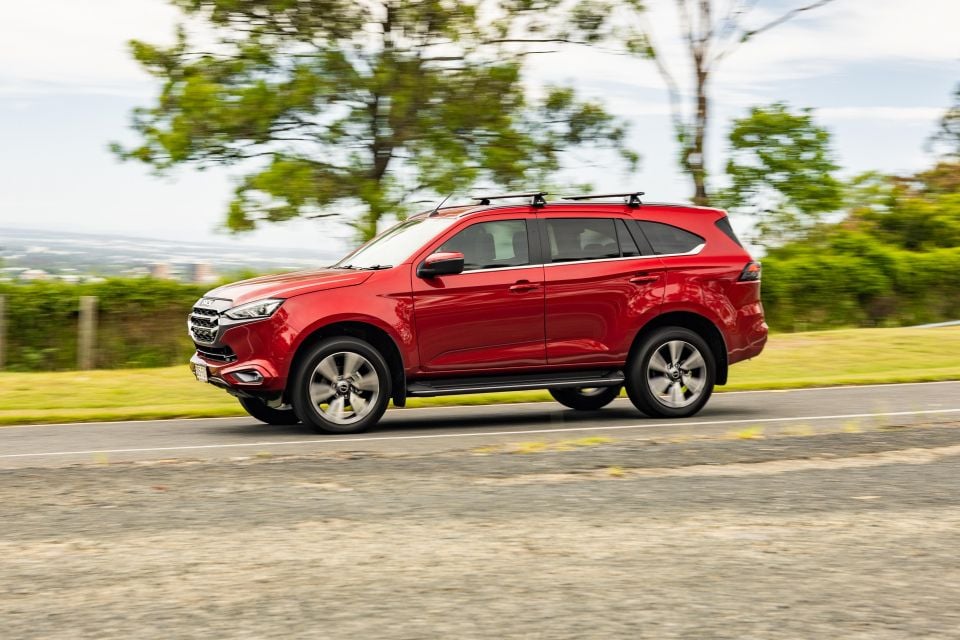
The traffic sign recognition system also works quite well, while the forward-collision warning sees a row of red lights flash at the base of the windscreen in addition to the standard instrument cluster message.
While the MU-X LS-T comes with front and rear parking sensors and a reversing camera, we’d like to see the option of a surround-view camera.
MU-X LS-M highlights:
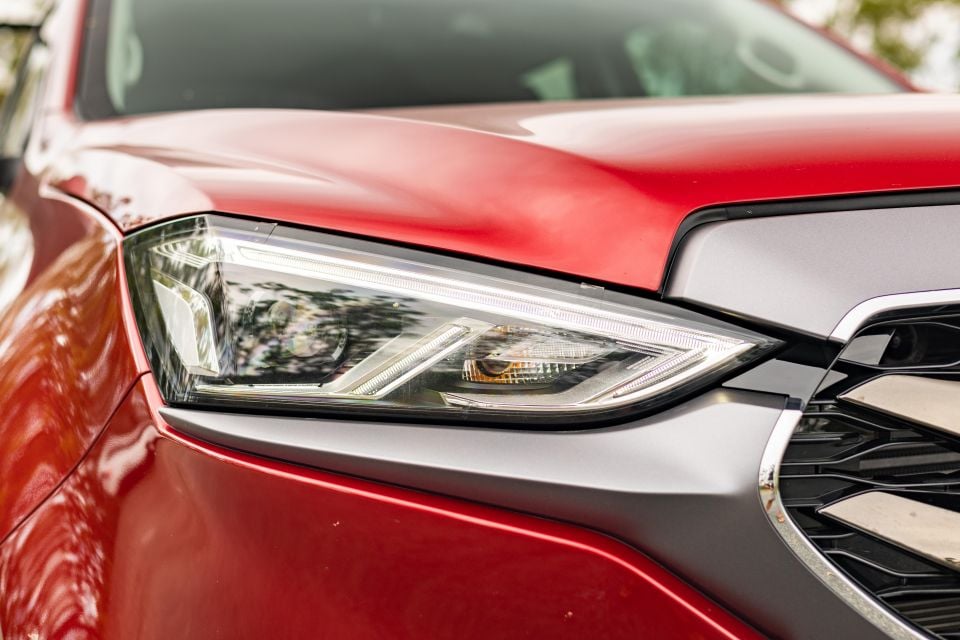

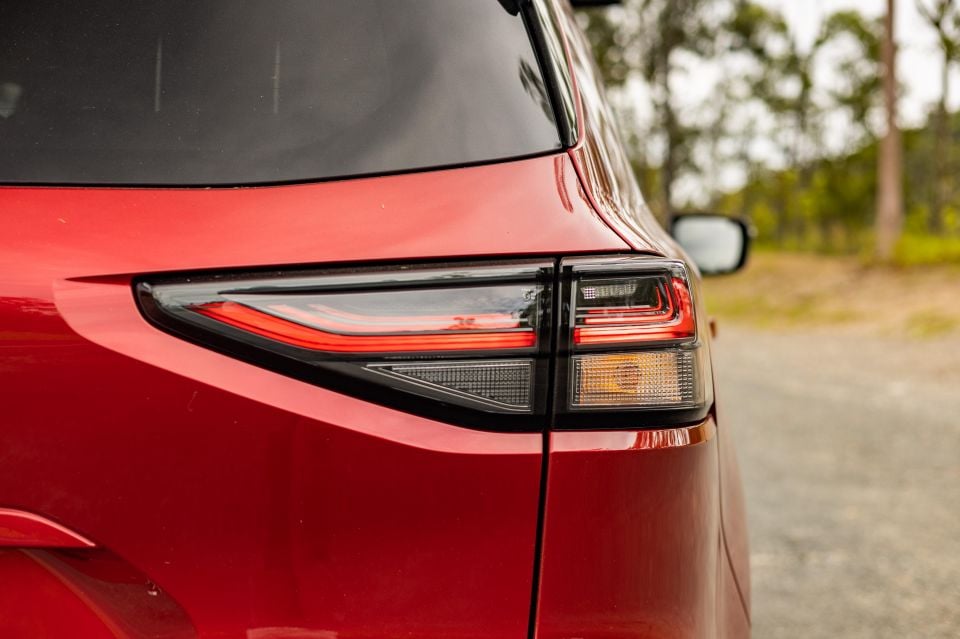

MU-X LS-U adds:
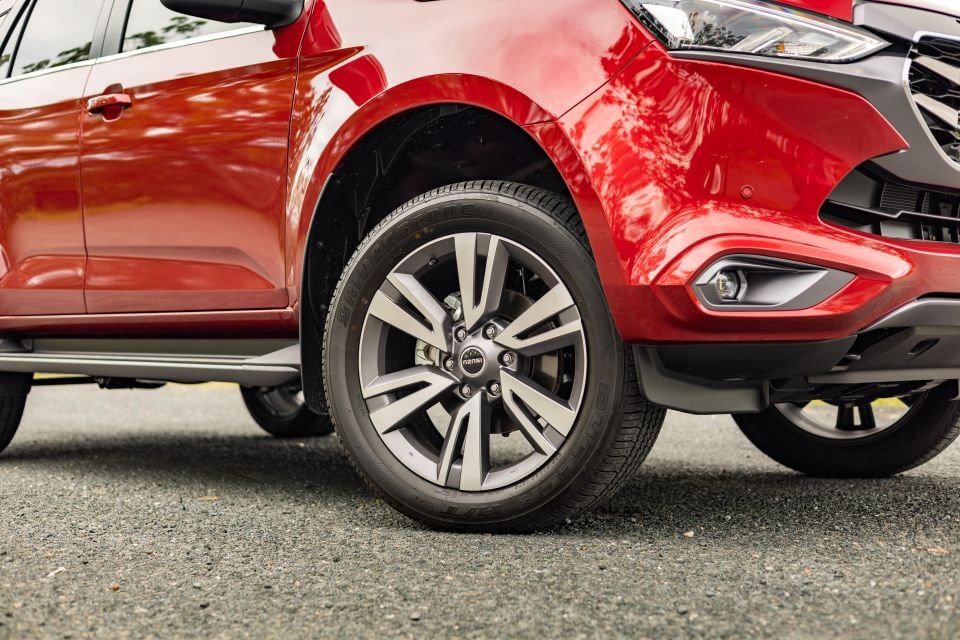

MU-X LS-T (as tested) adds:
The Isuzu MU-X has a five-star safety rating from ANCAP, based on testing conducted in 2020 of the related D-Max.
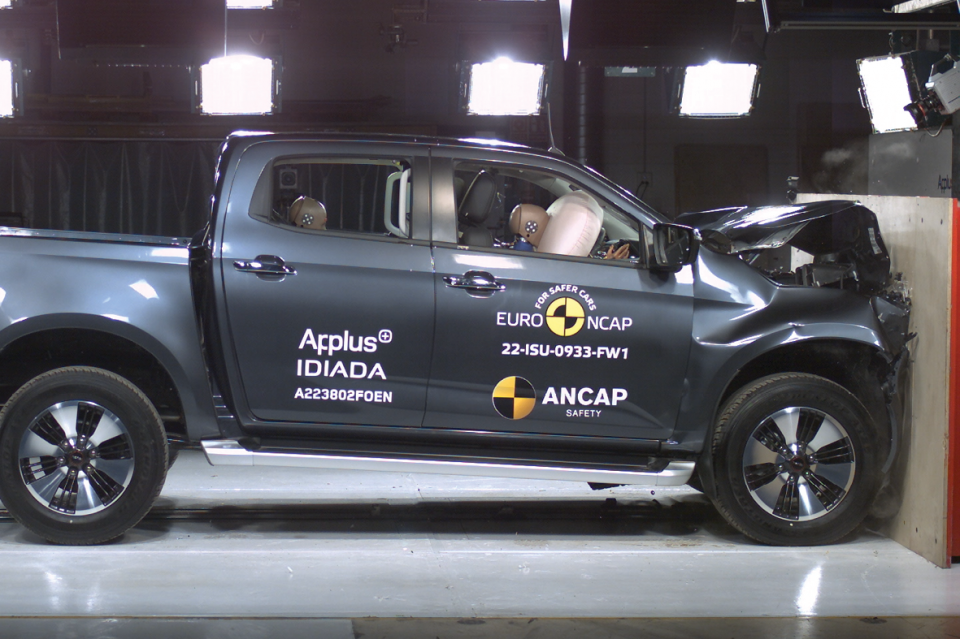
It received a design change to the driver’s knee airbag and instrument panel in July 2022 and was re-tested, maintaining its five-star safety rating.
That rating was based on an adult occupant protection score of 86 per cent, child occupant protection score of 85 per cent, vulnerable road user protection score of 69 per cent, and safety assist score of 84 per cent.
Standard safety features include:
LS-U variants and above also receive front parking sensors and tyre pressure monitoring.
The MU-X is covered by a six-year, 150,000km warranty. There’s also up to seven years of roadside assistance when you service at an Isuzu Ute dealer.
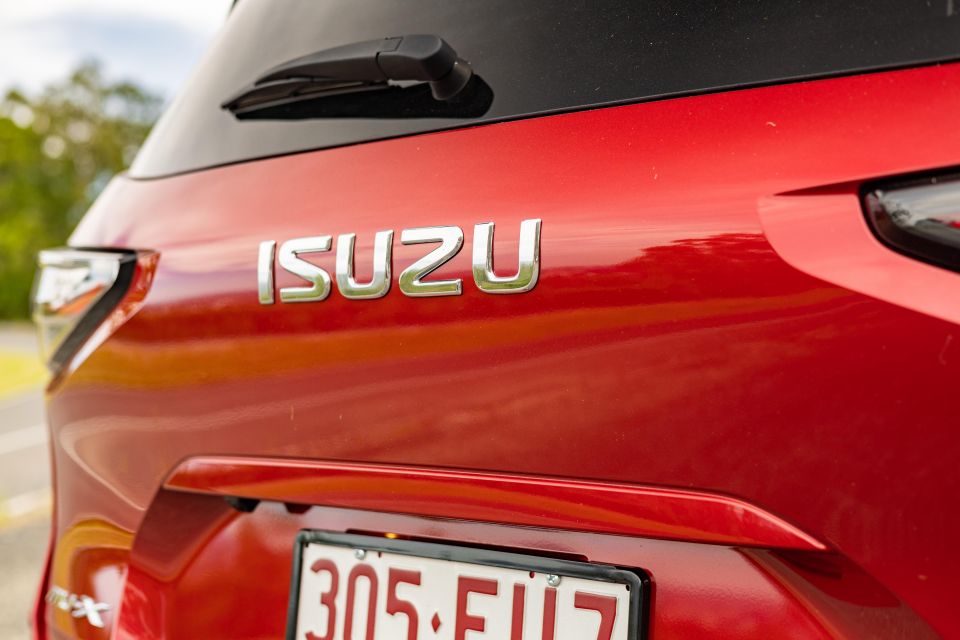
Logbook servicing is required every 12 months or 15,000km, whichever comes first, apart from a complimentary three-month service.
The first eight services are capped at the following prices:
| 3 months/3,000km | Free |
|---|---|
| 12 months/15,000km | $435 |
| 24 months/30,000km | $445 |
| 36 months/45,000km | $665 |
| 48 months/60,000km | $555 |
| 60 months/75,000km | $335 |
| 72 months/90,000km | $799 |
| 84 months/105,000km | $455 |
The Everest only has four years of capped-price servicing, though they’re cheaper at $329 per visit. The Prado has more affordable services, too, but frustratingly short six-month/10,000km intervals.
The Pajero Sport has them all beat with 10 years of capped-price servicing, and a 10-year, 200,000km warranty if you service within the Mitsubishi dealer network.
There’s no getting around it: the new Ford Everest is more powerful, has better infotainment, a more sophisticated four-wheel drive system, and is arguably both more satisfying to drive and better looking.
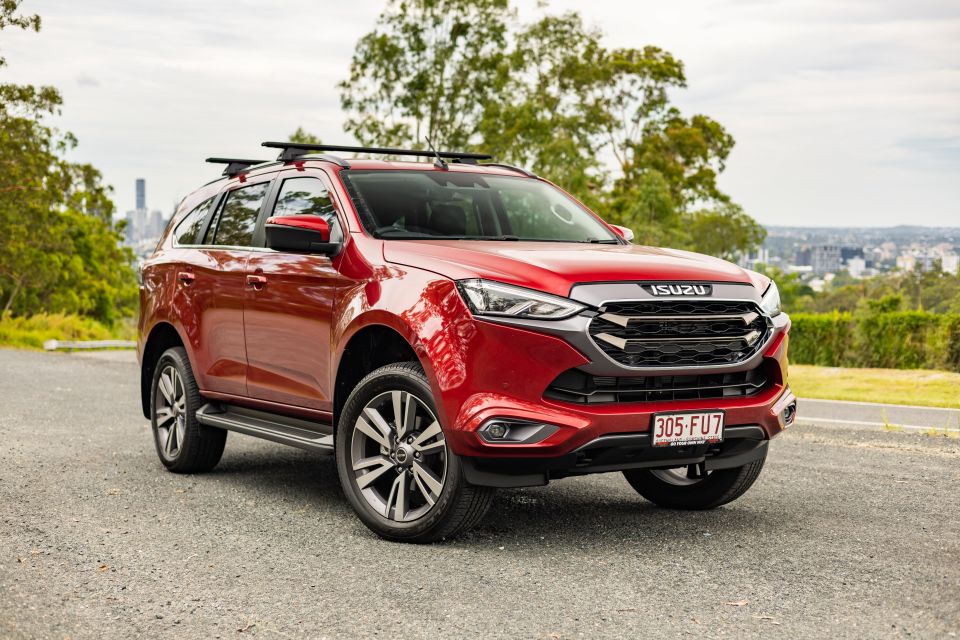
Don’t think the Isuzu MU-X has been relegated to also-ran status, however. That’s far from the case, and its lower price, longer warranty and more generous capped-price servicing scheme makes it a compelling alternative to the newer Everest and the stalwart Prado.
It may not be as punchy as those two, but its ride comfort is competitive and it doesn’t feel too truck-like to drive. It also has a spacious and practical cabin, including a third row that can fit some adults, and a level of fit and finish that’s superior to the Everest if perhaps not at the same level as the Prado.
Throw in a Prado-beating and Everest-matching 3500kg braked towing capacity and five-star ANCAP rating and the MU-X still stacks up as a worthy large SUV offering.
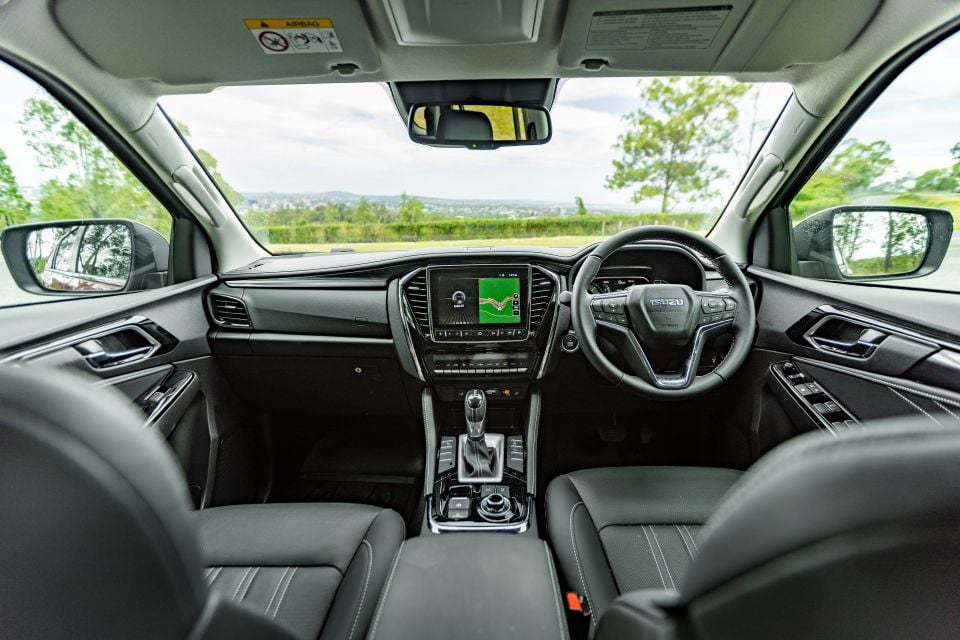
Click the images for the full gallery
MORE: Everything Isuzu MU-X
Where expert car reviews meet expert car buying – CarExpert gives you trusted advice, personalised service and real savings on your next new car.
William Stopford is an automotive journalist with a passion for mainstream cars, automotive history and overseas auto markets.


Josh Nevett
23 Hours Ago


CarExpert.com.au
2 Days Ago


Damion Smy
4 Days Ago


Derek Fung
4 Days Ago


Ben Zachariah
7 Days Ago
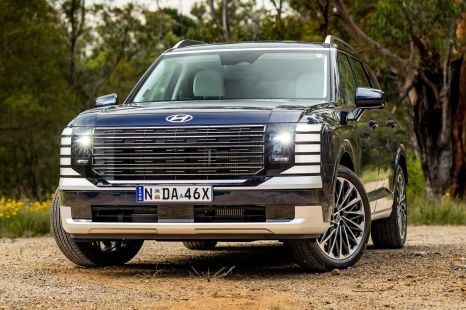

Matt Campbell
10 Days Ago